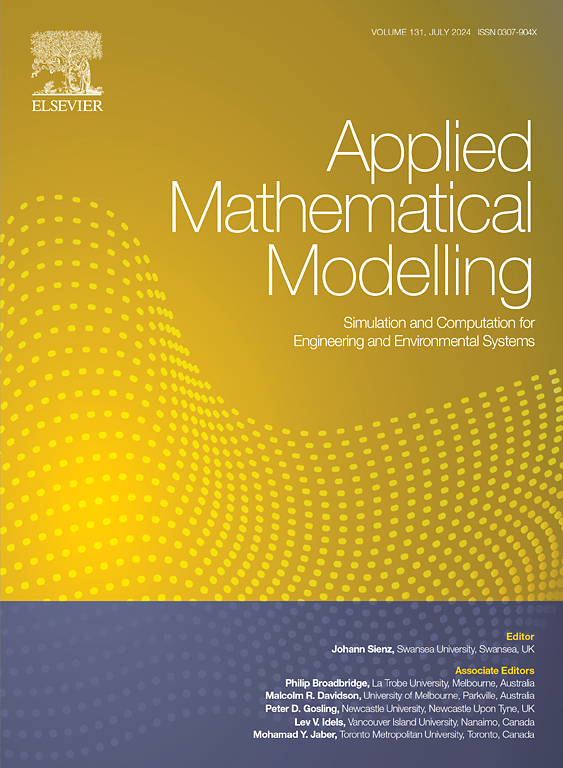Risk modeling of gas pipeline availability
IF 4.4
2区 工程技术
Q1 ENGINEERING, MULTIDISCIPLINARY
引用次数: 0
Abstract
Presently, there is worldwide consideration of Hydrogen pipelines as sustainable energy carriers as well as Carbon Dioxide pipelines for use in achieving net-zero goals through carbon capture and sequestration. For the purposes of planning expansions or new pipelines, typical design criteria like compressor maps, driver loads, etc., are used for simulations of pipeline capacity; however, it is often assumed that the compressor drivers work 100% of the time. In real life, each driver will have an associated availability metric. The availability metric, which parameterizes unit risk of failure, must be accounted for in simulations and pipeline planning to give an accurate view of pipeline capacity. Complicating the analysis is the fact that not all units have equal effect on the pipeline capacity.
In this paper we formalize the framework for including unit availability into pipeline capacity planning and define Pipeline Availability. Availability estimates from industry reports as well as anonymized data from Solar Turbines' global fleet are provided and compared. A novel application of probability theory is used to calculate pipeline availability, and a comparison is made with previous methods that relied on Monte Carlo simulations. Three example applications are presented to show how the novel method is more accurate and much less time consuming than Monte Carlo simulation. Our application of pipeline availability calculations make it easier and more time efficient to consider wide variations of design during the planning and risk evaluation of new Hydrogen or Carbon Dioxide pipelines or expansions of existing Natural Gas pipelines.
天然气管道可用性风险建模
目前,全世界都在考虑将氢气管道作为可持续能源载体,以及二氧化碳管道,通过碳捕获和封存来实现净零目标。为了规划扩建或新管道,典型的设计标准,如压缩机图,驱动器负载等,用于模拟管道容量;但是,通常假设压缩机驱动器在100%的时间内工作。在现实生活中,每个驱动程序都有一个相关的可用性度量。可用性度量,参数化单位故障风险,必须在模拟和管道规划中考虑,以给出管道容量的准确视图。使分析复杂化的事实是,并非所有单元对管道容量的影响都是相同的。
本文章由计算机程序翻译,如有差异,请以英文原文为准。
求助全文
约1分钟内获得全文
求助全文
来源期刊

Applied Mathematical Modelling
数学-工程:综合
CiteScore
9.80
自引率
8.00%
发文量
508
审稿时长
43 days
期刊介绍:
Applied Mathematical Modelling focuses on research related to the mathematical modelling of engineering and environmental processes, manufacturing, and industrial systems. A significant emerging area of research activity involves multiphysics processes, and contributions in this area are particularly encouraged.
This influential publication covers a wide spectrum of subjects including heat transfer, fluid mechanics, CFD, and transport phenomena; solid mechanics and mechanics of metals; electromagnets and MHD; reliability modelling and system optimization; finite volume, finite element, and boundary element procedures; modelling of inventory, industrial, manufacturing and logistics systems for viable decision making; civil engineering systems and structures; mineral and energy resources; relevant software engineering issues associated with CAD and CAE; and materials and metallurgical engineering.
Applied Mathematical Modelling is primarily interested in papers developing increased insights into real-world problems through novel mathematical modelling, novel applications or a combination of these. Papers employing existing numerical techniques must demonstrate sufficient novelty in the solution of practical problems. Papers on fuzzy logic in decision-making or purely financial mathematics are normally not considered. Research on fractional differential equations, bifurcation, and numerical methods needs to include practical examples. Population dynamics must solve realistic scenarios. Papers in the area of logistics and business modelling should demonstrate meaningful managerial insight. Submissions with no real-world application will not be considered.
 求助内容:
求助内容: 应助结果提醒方式:
应助结果提醒方式:


